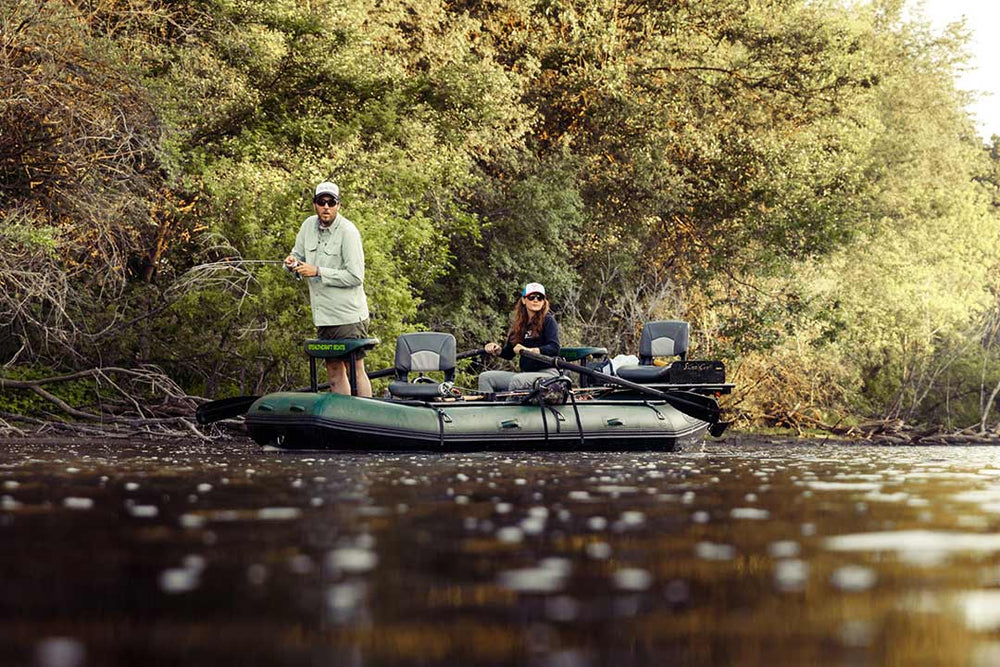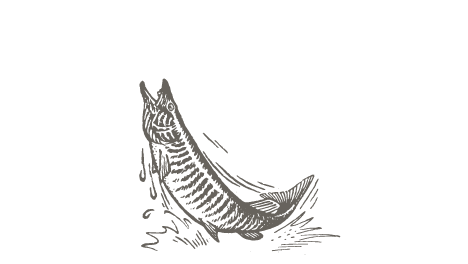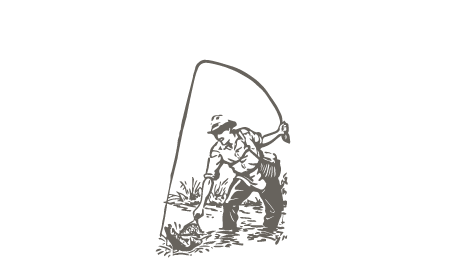We Need To Talk About Your Hooksets
Let’s talk about your hookset. It could probably be better. Don’t get mad. You wanted me to be honest and I’m being honest and what I’m saying is that your hookset could use some work. Really, it’s not just you. This applies to almost everybody who fly fishes for muskies. Most people have a hook setting problem and those who think they don’t are likely in some form of denial.
Luckily, there is a three step program for those who want to improve their hookset.
Step One: Point your rod at your fly.
Step Two: Strip hard.
Step Three: Repeat.
Pretty simple, right? No.
In my job guiding musky anglers, I can say without a doubt that when it comes to actually putting fish in the boat, there is one skill that sits well above all others in importance: the hook set. Fly choice, accurate casting and stripping skills are all important, but there is room for variation in all. On any given day, there are a bunch of different flies that a musky would eat. If your cast is off the mark by a foot or so, it might matter, but it probably doesn’t. There are a host of different ways to strip a musky fly and knowing to experiment and change things up is part of the game. The hookset, however, is a one shot deal. It is either done correctly or it isn’t.
A good hookset begins with the cast. A cast that lands with a bunch of slack on the water is bad news. In river fishing especially, it is pretty common for muskies to eat a fly right when it hits the water. An accurate cast into a pocket of holding water puts the fly right on a musky’s nose and the fish responds instantly. These are reaction strikes, which means they are often violent and splashy. If there are three strips worth of slack in the line, you will miss this fish almost 100% of the time. You must practice your casting until the fly hits the water with no slack in the system. And, yes, you are going to want to practice this in the wind.
Immediately upon delivering the fly, get your rod tip in the water. There is no reason to have the tip of your rod out of the water while stripping. When a fly is stripped with the rod tip out of the water, there will be slack in the system between the rod tip and the water surface. This is eliminated by putting the tip in the water. There should be a straight line from your casting hand to your fly. Do not try to impart movement on your fly by moving the rod tip to the side! You make the fly move by stripping. When a fish eats, you want that rod pointed at it.
This is where I want to introduce a rule. Actually, it’s more like a guideline, but if you treat it like a hard and fast rule, you won’t regret it. Unless you are casting, your rod tip never goes above your waist. This is a big deal. You can’t trout set if you follow this rule. Keep your rod tip below your waist at all times from the moment the fly hits the water to when the fish hits the net! In fact, just keep it in the water.
So now you are stripping your fly with your rod tip in the water and pointed at your fly. You are thinking about how, no matter what, you won’t lift the rod tip above your waist. A musky eats the fly. What now? Simple: keeping the rod tip pointed at your fly, you strip, hard. And then you strip hard again. And again. And you keep stripping until the fish goes the other direction and pulls back hard enough that your stripping hand is pulled toward your stripping guide. If that never happens, keep the rod pointed at the fly and keep stripping. If the fish pulls back hard enough to pull your hand forward, then put a bend in the rod by moving the tip right, left, or down. Remember, you promised to never put it above your waist.
All of the above leads to another rule: hooksets are done with your stripping hand. After the cast, your rod hand has one job and that is to keep the rod pointed at your fly. Your stripping hand is your hook-setter.
Okay, simple enough. But what if my stripping hand is at the end of a strip when a fish eats? How can I strip if my hand is all the way back? Nothing changes in this scenario other than that you have to reach your stripping hand forward first. Keep the rod pointed at the fly and reach forward with your stripping hand, grab the line and strip hard. And keep stripping as per the above instructions.
Alright, but what happens when the fish eats in a figure eight? Surely this involves some kind of setting with the rod? No. When the fish eats, point the rod at the fly and strip. Strip it right up to the tip top if you have to. It is better to just point the rod at the fly and let the fish hook itself when it accelerates than it is to try to set the hook by sweeping the rod. There is simply not enough power in a fly rod to use the rod to set a hook in the roof of a musky’s mouth. Point the rod at the fly and strip. And keep stripping until the fish pulls your hand forward and then, and only then, move the rod right, left or down to put a bend in it.
The hookset for muskies with a fly rod is about as simple of a process as you can have. Point your rod at the fly, strip hard, and repeat. So why do so many people, myself included, mess it up? This is where my yoga-practicing wife would tell me that “mindfulness” comes into play. You need to be present in the moment and thinking about what you’re going to do when a fish eats. If your plan is to wing it when it happens, there is a very good chance that you’ll use your rod hand to set the hook. You have to think about this all the time while fishing because until you’ve hooked a lot of muskies, you can’t trust your instinctive response. By the time your brain overrides your reactions, it’s too late. I’ve seen it literally hundreds of times
There are a couple of items you should have with you that will increase your hookset percentage. The first is a good leader. Inspect your leader carefully and swap it if you have any doubts about its integrity. You can’t strip hard enough to break undamaged 40# wire or 80# fluorocarbon. Tie your leader to a post and try it sometime. The other item is a hook file. Sharp hooks catch fish. If your fly hits a rock or lodges in a log, take a few seconds and sharpen it.
There are a whole bunch of reasons that people choose to fly fish for muskies and a pile of skills to try and master if a person wants to do this well. When you’ve put it all together and a musky eats your fly, the hookset is the moment of truth. Think about it, practice it, and when that moment arrives, you’ll do the right thing.






I thought I’d left a comment when I first read this, but apparently not.
…anyway, this is good enough that I come back and read it at intervals.
I believe the phrase I heard in Steve’s boat was something like, “Strip set like you’re trying to start a 50 HP outboard!”
Leave a comment